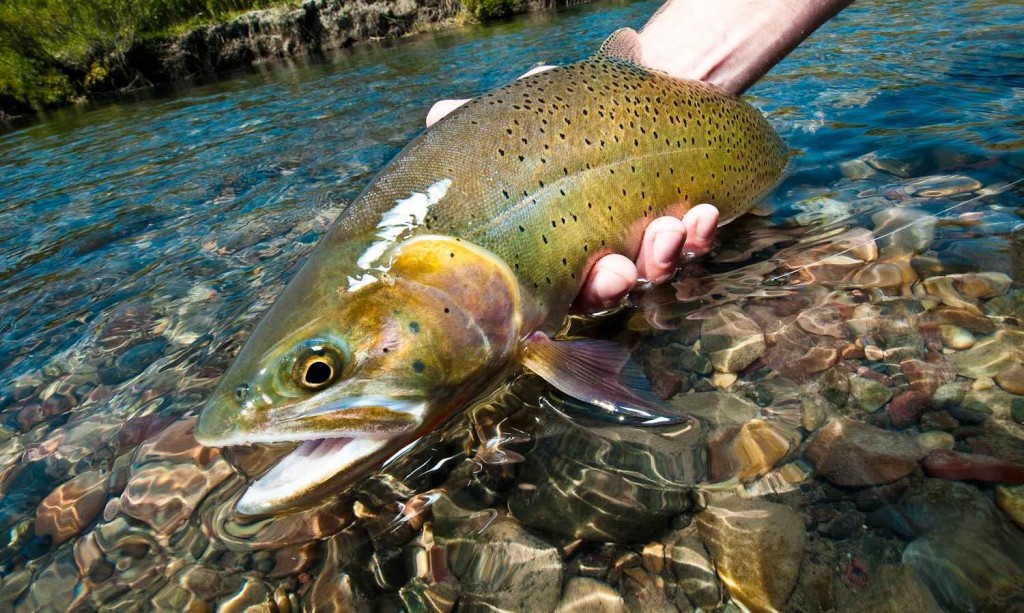
A beautiful Snake River cutthroat trout landed along the banks on a straight section of river. Photo By: Louis Cahill
By Kent Klewein
We all love to fish the bends of a river but what do we do in the straightaways?
It’s your lucky day. You’ve somehow managed to get away from your busy work schedule and find time to spend a few days fly fishing for some beautiful trout. You’ve brought several trout to hand fishing a series of S-bends, and you feel like a hero. Life is good, right? Unfortunately, the hot fishing is about to slow significantly as you round the bend in the river and notice the river flows straight as an arrow for the next several hundred yards. There’s very little mid-stream obstructions and no well defined current seams. Furthermore, the water depth is consistent bank to bank. You fish for a while, working your way upstream blind casting, but you’re not having any luck. You find yourself getting frustrated because you can’t figure out where the trout should be holding, and there’s no rising fish. What should you do?
When I find myself in this situation, I focus on presenting my flies against the banks. When there’s no obvious current seams or in-stream structure providing depth change or current buffers, cutthroat trout will generally prefer holding close to the banks. The water current running along the banks causes friction, and this friction slows down the current speed making it a much more efficient place hold and feed. Because all trout prefer to feed in areas where they can consume more energy than their expending, they instinctively search out these slower current areas. So remember this next time you’re forced to fly fish a straight and uniform section of trout stream or river, and focus your time and energy on targeting the banks with your flies. If you still aren’t having success after doing so, bypass the water completely in search of the next bend, drop off, or significant current seam.
Keep it Reel,
Kent Klewein Gink & Gasoline www.ginkandgasoline.com hookups@ginkandgasoline.com Sign Up For Our Weekly Newsletter!
Sign Up For Our Weekly Newsletter!

Any tips on what to do in a similar situation, but when the river is too wide/deep to wade across to fish the opposite bank? I feel like I run into this situation often up here in Maine on some of our bigger rivers. I generally approach these sections to start by fishing close and working my way out as far as I can cast and reasonably control my drifts, but I feel like it is often inefficient and takes too much time to cover a 50-100 yd stretch in this manner.
I can only think of doing a direct up stream presentation or, swining flies,and focusing on finding feeding fish. I also run into this problem while fishing the Colorado River a lot of it is too wide and fast for me to comfortable Wade.
Currents are rarely as straight as the banks. Follow the foam!
Also look for any depression in the stream bottom. Currents will be a little slower at the bottom, and surprisingly big fish will hold in some small spots you wouldn’t expect.
Great advice, Kent. Thanks.